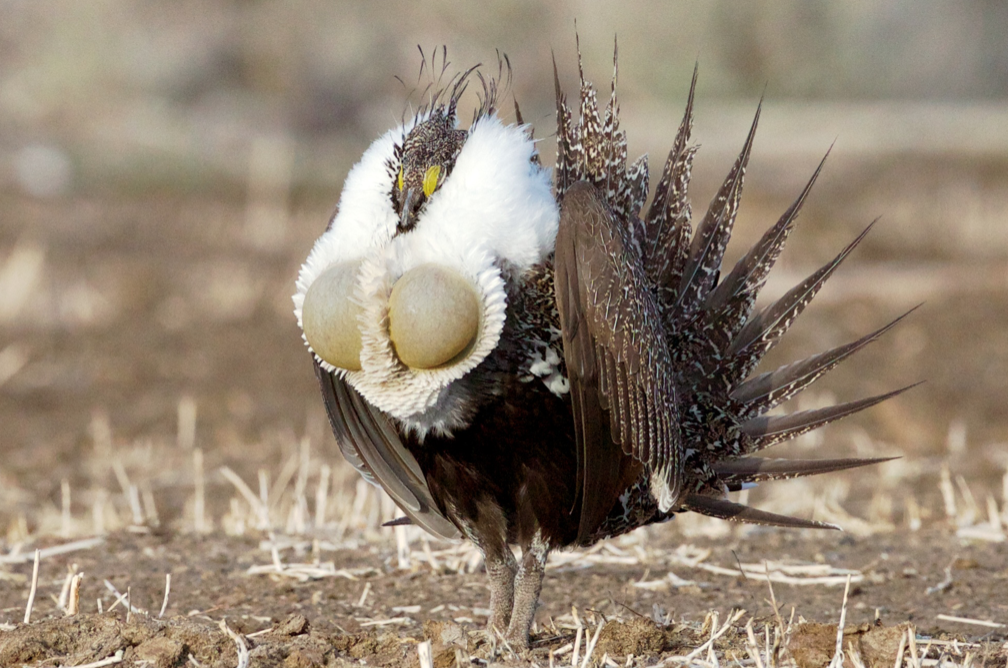Article and photo by Jean Bjerke
I love the sometimes flamboyant and even outrageous behavior of birds and wildlife to attract mates. One of my favorites is the mating display of the Greater Sage Grouse, often known as Sage Hen, native to the broad sagebrush plains of the central Rocky Mountain states, and other areas of the west, including Island Park.

The Sage Grouse is larger than a ring-necked pheasant, smaller than a wild turkey. It measures up to 30 inches long and stands two feet tall, weighing from two to eight pounds. It is North America’s largest grouse and was once widespread across most of western North America. The population has declined dramatically due to destruction of its habitat through agriculture, urban development, and over grazing.
The birds are drab and inconspicuous most of the year, but their mating display is impressively dramatic.
In the spring, Greater Sage Grouse males gather on historic breeding grounds known as “leks” where they strut and display to try to attract females. They fan and show off their beautiful pointed tails and the dramatic white ruff of feathers around their neck and chest, repeatedly inflating yellow air sacs underneath, with a distinctive plopping sound. Their leks are generally bare patches of ground in sage habitat. The one I observed was actually in a farmer’s corral. It had been a lek for grouse long before the corral was there. As many as 150 birds come back every year which is pretty impressive to watch.
It was an awesome experience to observe these birds strut, display, fight, and compete for females’ attention. It was well worth it to crawl out of bed a couple of hours before dawn on a freezing April morning, and enter a blind well before first light of day.
The Sage Grouse been considered for protection under the Endangered Species Act, and various government and private agencies and alliances are working to conserve remaining habitat in order to reduce the continued decline of this species.
Jean and her husband Randy have been Island Park homeowners for more than 20 years. Jean is President of Henrys Fork Wildlife Alliance.
